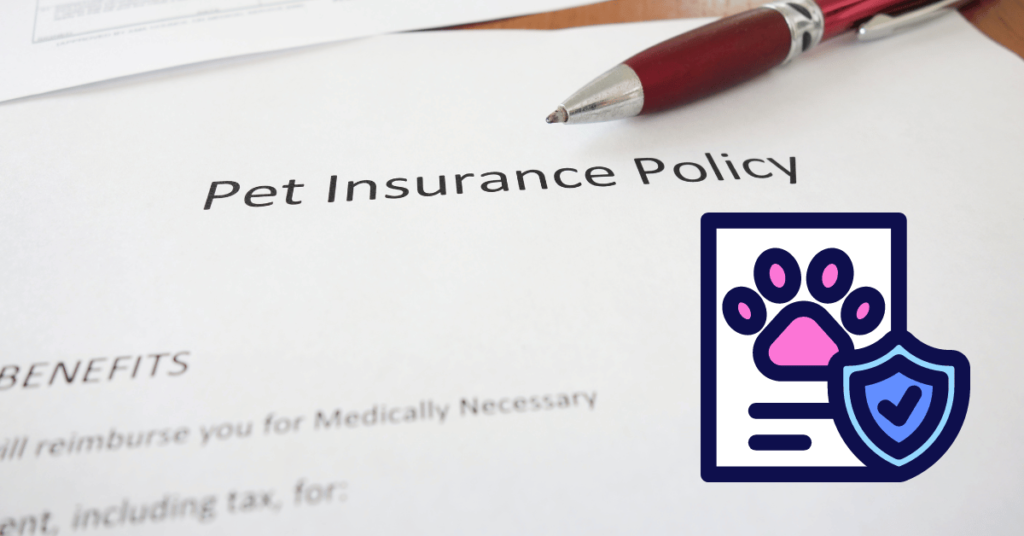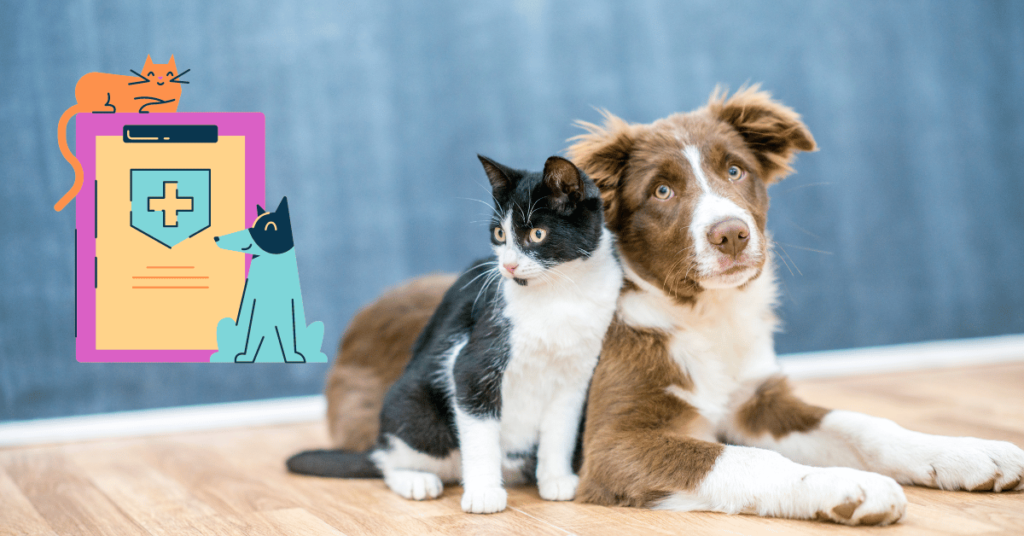Pet insurance is a type of coverage that helps pet owners manage the often high costs of veterinary care. Just like health insurance for humans, pet insurance covers a variety of medical expenses, either fully or partially, depending on the policy. If you’re a pet owner, understanding how pet insurance works and whether it’s right for you can help you make informed decisions about your pet’s health and your finances.
In this article, we’ll explore what pet insurance is, how it works, its cost, and whether it’s worth the investment.
What Is Pet Insurance?
Pet insurance is a policy that helps offset the cost of medical care for pets. When your pet gets sick or injured, pet insurance can cover part or all of the vet bills, depending on your policy. Pet insurance usually covers procedures like surgeries, medications, and diagnostic tests, but some policies may exclude specific conditions or treatments.
Like human health insurance, pet insurance involves a monthly or annual premium, and there is typically a deductible, which is an out-of-pocket expense you must pay before coverage kicks in.
Key Features of Pet Insurance
- Coverage for veterinary bills: Pet insurance helps cover the cost of expensive procedures and treatments for pets.
- Deductibles and co-pays: Owners must pay a deductible before the insurance company starts to cover expenses. Many policies also have co-pays, meaning you only get reimbursed for a portion of the claim.
- Premiums vary: Premiums for pet insurance depend on various factors such as the pet’s species, age, breed, and location.
How Does Pet Insurance Work?

Pet insurance operates similarly to human health insurance. Once you purchase a policy, you pay a monthly or annual premium. If your pet gets sick or injured, you visit the vet, pay the bill, and then submit a claim to the insurance company. Once the claim is approved, the insurer reimburses a portion of the covered costs, based on the policy’s terms.
Here’s a simple breakdown of how pet insurance works:
- Get medical care: Your pet requires medical treatment (e.g., an emergency surgery).
- Pay upfront: You pay the veterinary clinic for the procedure.
- Submit a claim: You file a claim with your pet insurance company, along with an itemized bill from the vet.
- Reimbursement: The insurance company reviews your claim and reimburses you according to the coverage percentage in your plan (e.g., 80%, 90%).
Factors That Affect Pet Insurance Costs
The cost of pet insurance can vary widely based on several factors. These include:
- Species: Dogs are generally more expensive to insure than cats, primarily because of their larger size and higher frequency of claims.
- Breed: Some breeds are prone to specific health issues, making them costlier to insure. For instance, larger dog breeds are more prone to joint problems.
- Gender: Statistically, insurance premiums for male pets may be higher than for females due to a higher number of claims.
- Age: Older pets are more likely to develop health issues, so insurance premiums tend to increase as pets age.
- Location: Veterinary care costs more in urban areas compared to rural or suburban areas, which can impact insurance premiums.
Average Cost of Pet Insurance
According to a report from the North American Pet Health Insurance Association (NAPHIA), the average annual premium for pet insurance in the U.S. in 2021 was $584 per year for dogs and $343 per year for cats. Additionally, the typical co-pay on claims is around 80%, meaning owners are reimbursed for 80% of their vet bills, though some policies offer coverage as high as 90% or 100%.
What Does Pet Insurance Cover?
Pet insurance policies differ based on the type of coverage you choose. Here are the main types of pet insurance:
- Accident-only coverage: This type of insurance covers injuries caused by accidents, such as broken bones or poisoning. It doesn’t cover illnesses or routine care.
- Accident and illness coverage: The most comprehensive plan, this policy covers both accidents and illnesses like cancer, infections, and allergies. Some policies may also cover hereditary conditions.
- Wellness coverage: Some policies include or offer add-ons for routine care, such as vaccinations, annual checkups, and dental cleanings. However, this isn’t always included in standard plans.
Average Veterinary Costs
Veterinary care can be expensive, especially if your pet faces a medical emergency or requires specialized treatment. Here are some examples of average costs:
- Emergency exams: $100 to $200
- Overnight stays: $1,000 to $2,000
- Routine medical costs (e.g., vaccines, checkups): $160 to $220 annually
With advancements in veterinary medicine, pets now have access to treatments once reserved for humans, such as oncology (cancer treatment) and neurology. These specialized treatments can drive up costs significantly.
Is Pet Insurance Worth It?

Whether pet insurance is worth it depends on your pet’s needs and your financial situation. If your pet is young and healthy, you might spend less on vet bills than you would on insurance premiums. However, if your pet develops a serious illness or injury, insurance could save you thousands of dollars in veterinary care costs.
Example Scenario
Let’s consider an example: The Fosters adopted Rufus, a rescue dog, knowing they would need to cover routine medical expenses such as vaccinations, wellness visits, and preventative medications. These first-year costs added up to about $710. The average cost of pet insurance was around $584, so the Fosters decided that getting insurance made sense, given the potential for unexpected medical bills.
Conclusion
Pet insurance can be a valuable investment for pet owners, especially if your pet is prone to health issues or if you want peace of mind in case of emergencies. Understanding how pet insurance works, the costs involved, and what is covered can help you make an informed decision. Remember to evaluate different plans based on your pet’s needs, and always read the fine print to understand the coverage limits and exclusions before committing to a policy.
So that was all about this article. If you have any further questions feel free to comment down below. We are always here to help you!
FAQs
1. What is pet insurance?
Pet insurance is a type of insurance policy that helps cover the costs of veterinary care for pets, including illnesses, injuries, and accidents.
2. How does pet insurance work?
Pet insurance typically works by reimbursing you for covered veterinary costs. You pay the vet upfront, submit a claim to your insurance provider, and receive reimbursement based on your plan’s terms.
3. What does pet insurance cover?
Depending on the policy, pet insurance can cover accidents, illnesses, surgeries, medications, diagnostic tests, and even routine care like vaccinations if you have wellness coverage.
4. Does pet insurance cover pre-existing conditions?
Most pet insurance policies do not cover pre-existing conditions, meaning any illness or injury your pet had before the policy was taken out won’t be covered.
5. How much does pet insurance cost?
The cost of pet insurance varies based on factors like your pet’s species, breed, age, and your location. On average, it costs around $584 per year for dogs and $343 per year for cats in the U.S.
6. Is pet insurance worth it?
Pet insurance can be worth it if your pet faces expensive treatments or emergencies. It can save you money in the long run, especially for major medical issues.
7. Can I choose any veterinarian with pet insurance?
Yes, most pet insurance providers allow you to choose any licensed veterinarian. There are no network restrictions like some human health insurance plans.
8. What’s the difference between accident-only and comprehensive coverage?
Accident-only policies cover injuries caused by accidents, while comprehensive coverage also includes illnesses, surgeries, and sometimes routine care.
9. Are there waiting periods for pet insurance?
Yes, most pet insurance plans have waiting periods, typically ranging from a few days to a few weeks before coverage takes effect.
10. How do I file a pet insurance claim?
You typically file a claim by submitting an itemized vet bill to your insurance company along with any other required documentation. The insurance company will then process the claim and reimburse you based on your plan’s coverage.




